
WEEK 22 IN PHOTOS
06/01/18 — Heydon Hatcher
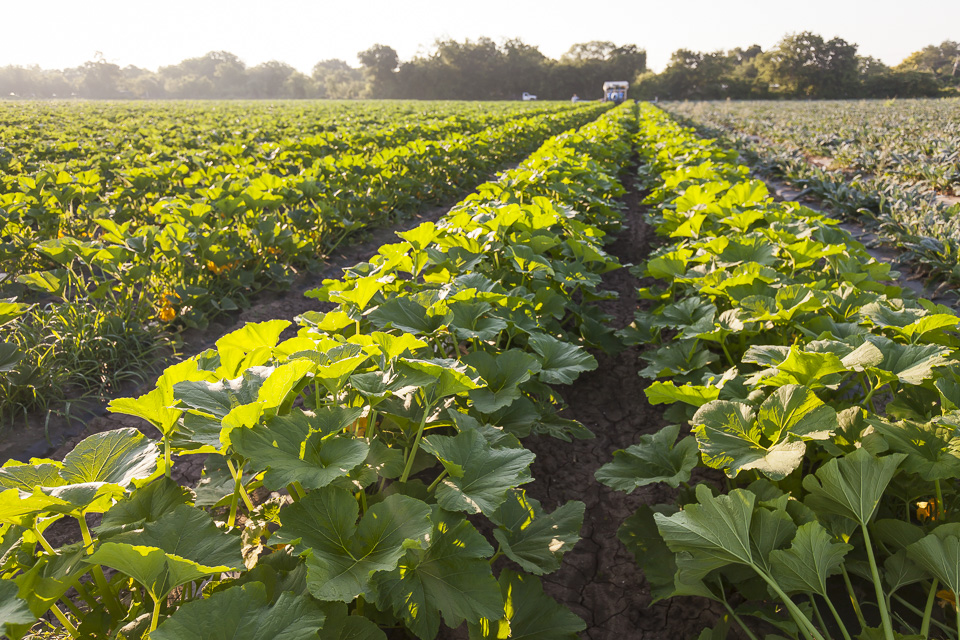 Summer squash fields forever. Photo by Scott David Gordon.
Summer squash fields forever. Photo by Scott David Gordon.
We are having our massive Central Texas Food Bank potato gleaning today, 6/1, out at the Garfield Farm! Plus, pickling season has begun. Our Wholesale Manager, Mike, has been getting all the calls from his pickling folks to get pounds and pounds of pickling cucumbers. We are gearing up for our bulk tomato sale as deliveries start next week!
Greens are almost completely done for the season, okra and eggplant have officially arrived, and melons are not too far behind. Stay hydrated, Austin, it's hot!
In case you haven't heard, we are hiring! Head on over to our site to check out some of the available positions.
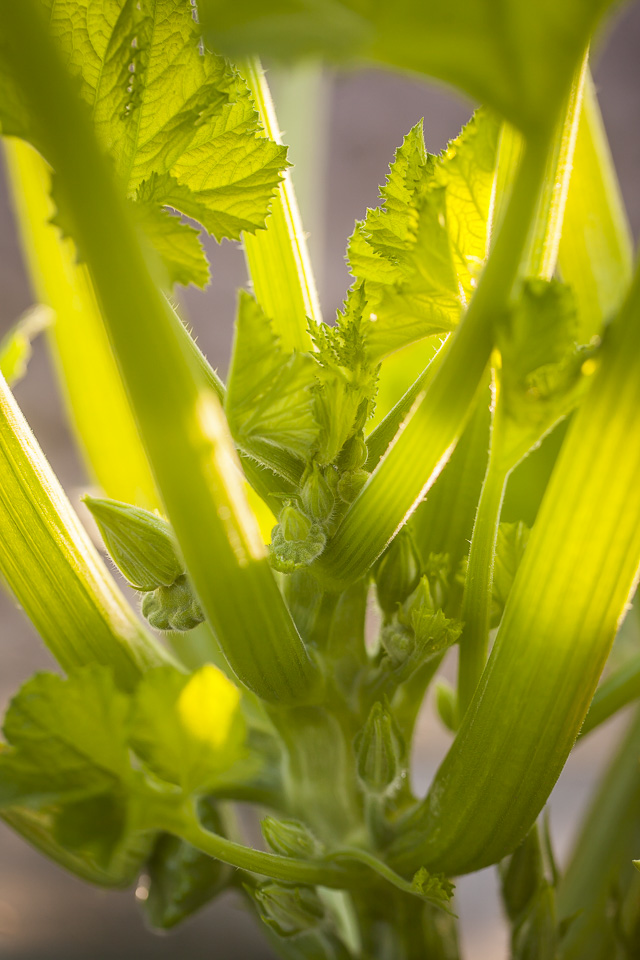 Baby squash. Photo by Scott David Gordon.
Baby squash. Photo by Scott David Gordon.
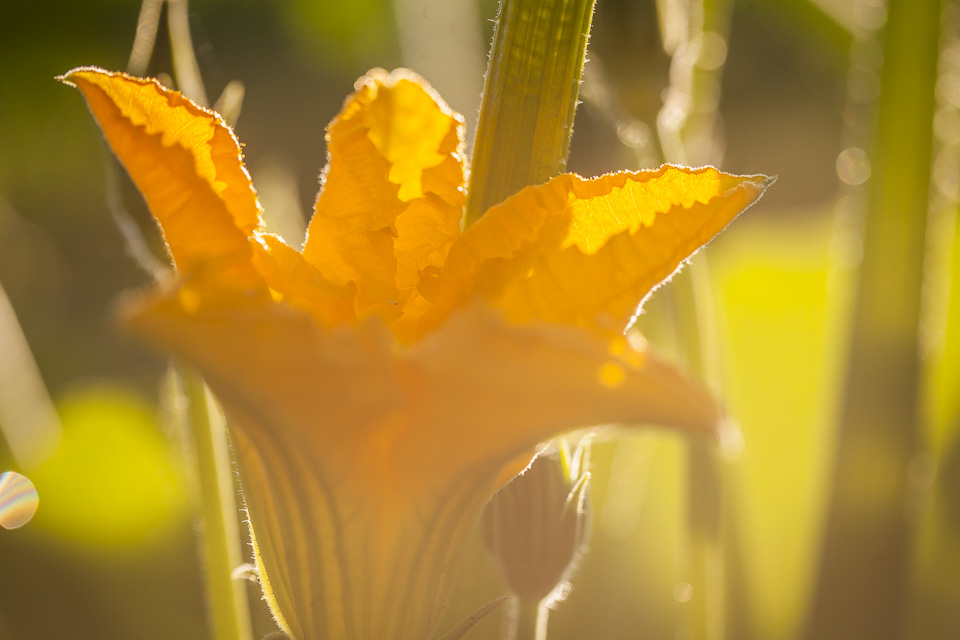 Blossoms. Photo by Scott David Gordon.
Blossoms. Photo by Scott David Gordon.
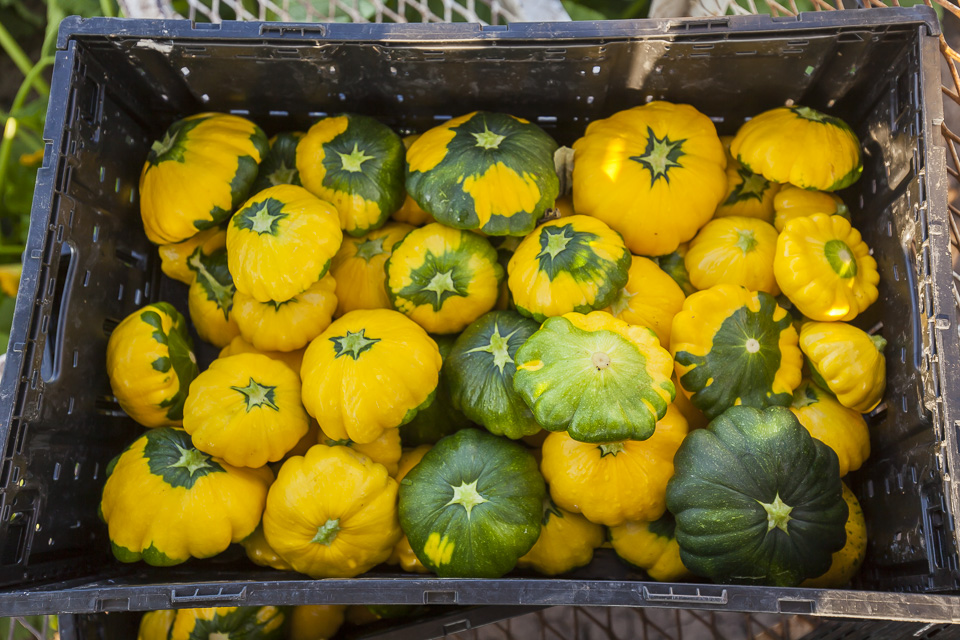 Gorgeous colors on patty pan squash. Photo by Scott David Gordon.
Gorgeous colors on patty pan squash. Photo by Scott David Gordon.
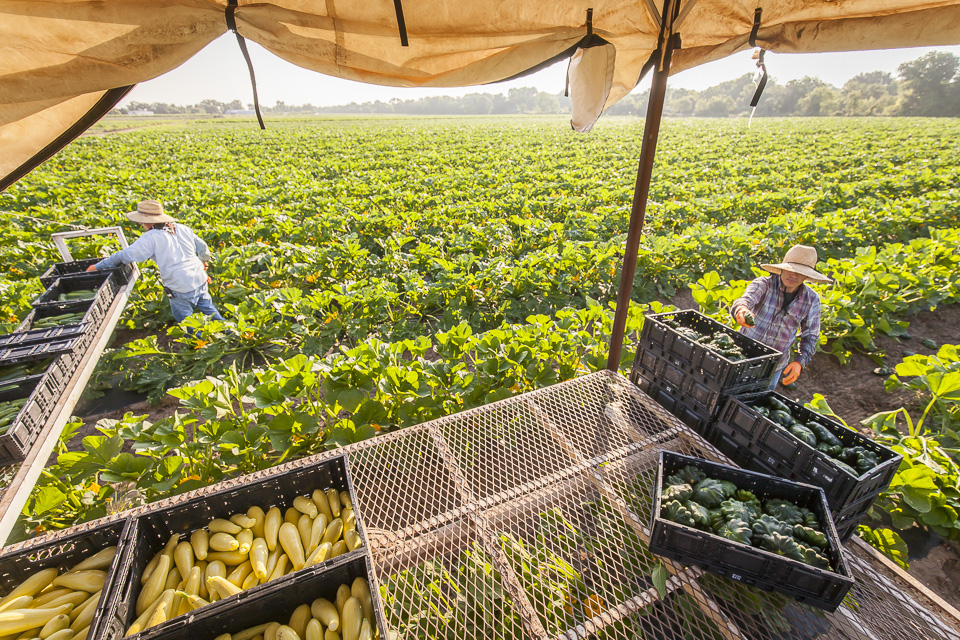 Squash and zucchini harvest from the harvest trailer view. Photo by Scott David Gordon.
Squash and zucchini harvest from the harvest trailer view. Photo by Scott David Gordon.
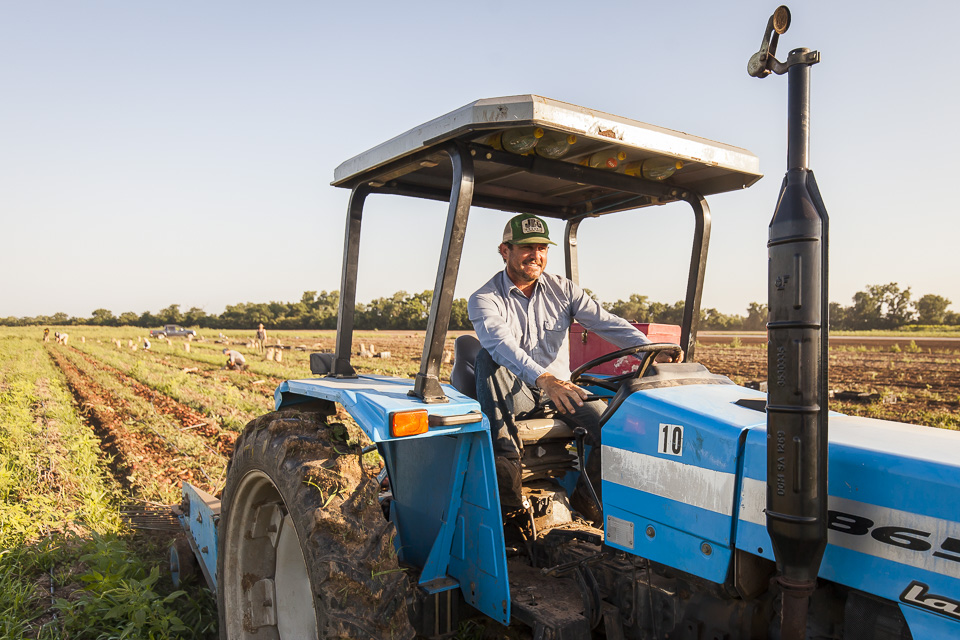 Brenton at the helm. Photo by Scott David Gordon.
Brenton at the helm. Photo by Scott David Gordon.
 Harvesting potatoes. Photo by Scott David Gordon.
Harvesting potatoes. Photo by Scott David Gordon.
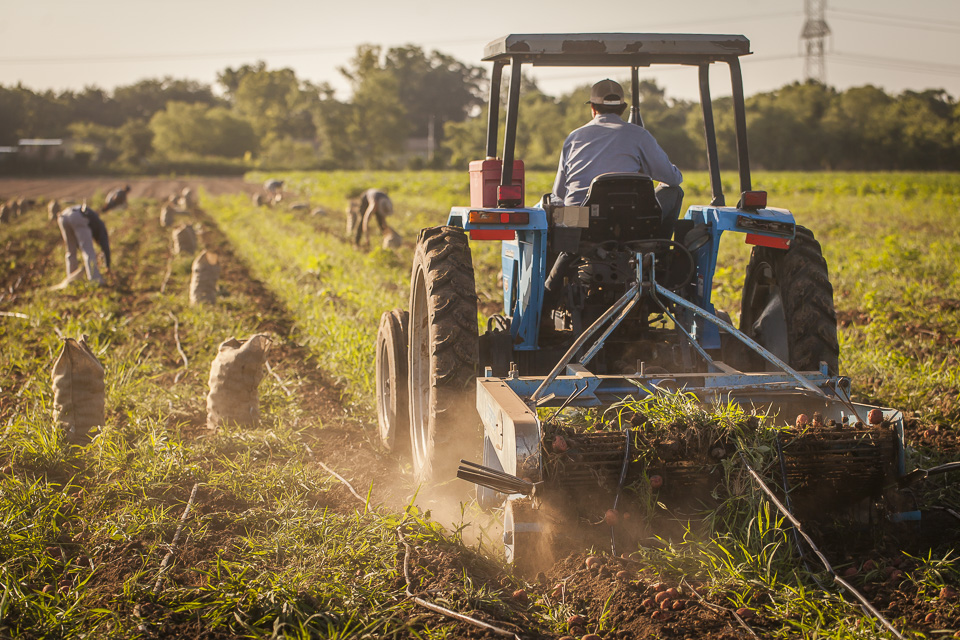 Digging up 'taters. Photo by Scott David Gordon.
Digging up 'taters. Photo by Scott David Gordon.
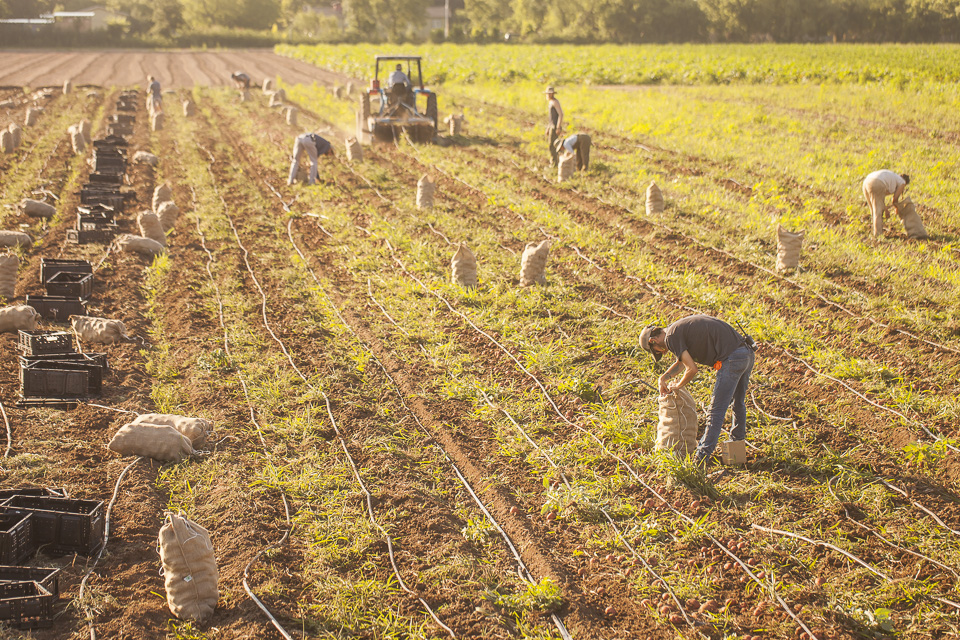 The potato harvest. Photo by Scott David Gordon.
The potato harvest. Photo by Scott David Gordon.
 Hi Montana! Photo by Scott David Gordon.
Hi Montana! Photo by Scott David Gordon.
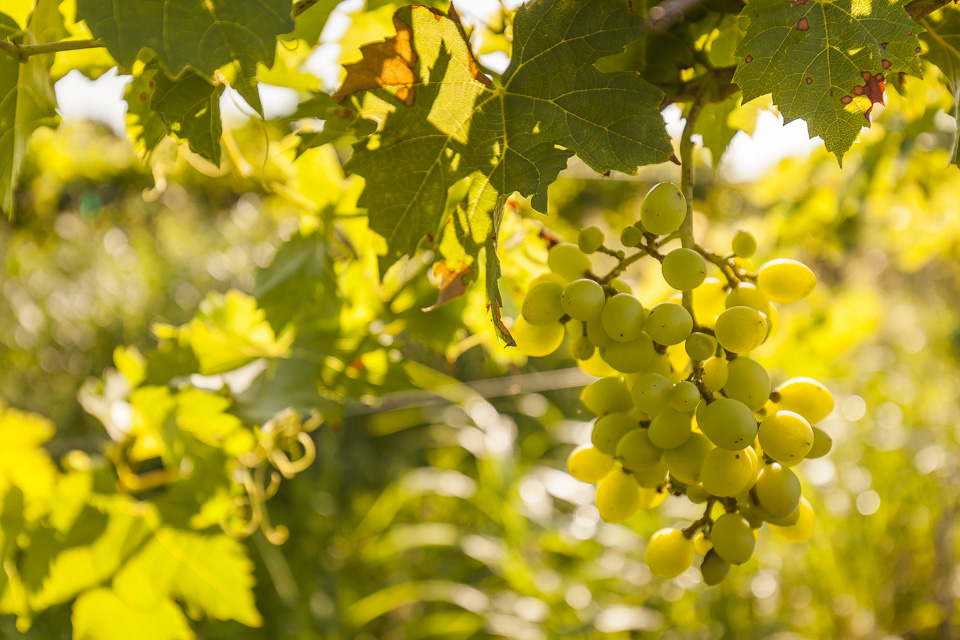 Updates on the grapes. Photo by Scott David Gordon.
Updates on the grapes. Photo by Scott David Gordon.
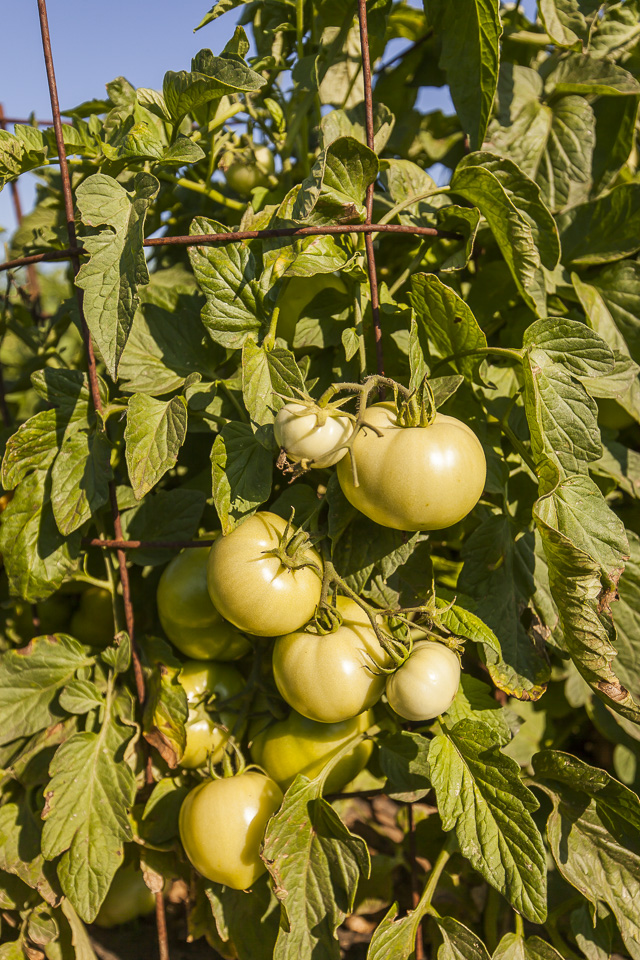 Gorgeous green tomatoes. Photo by Scott David Gordon.
Gorgeous green tomatoes. Photo by Scott David Gordon.
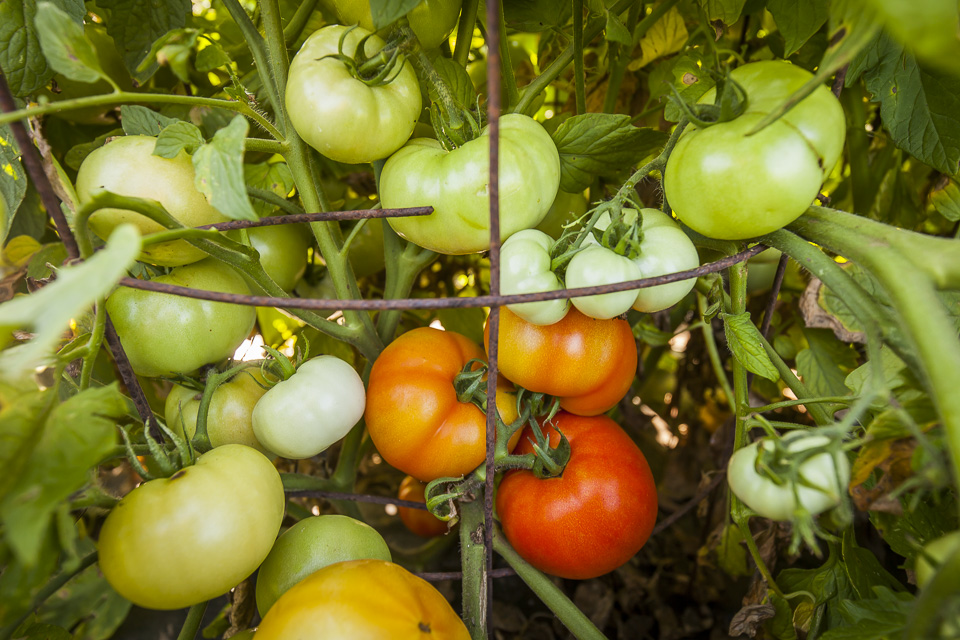 All the shades of tomatoes. Photo by Scott David Gordon.
All the shades of tomatoes. Photo by Scott David Gordon.
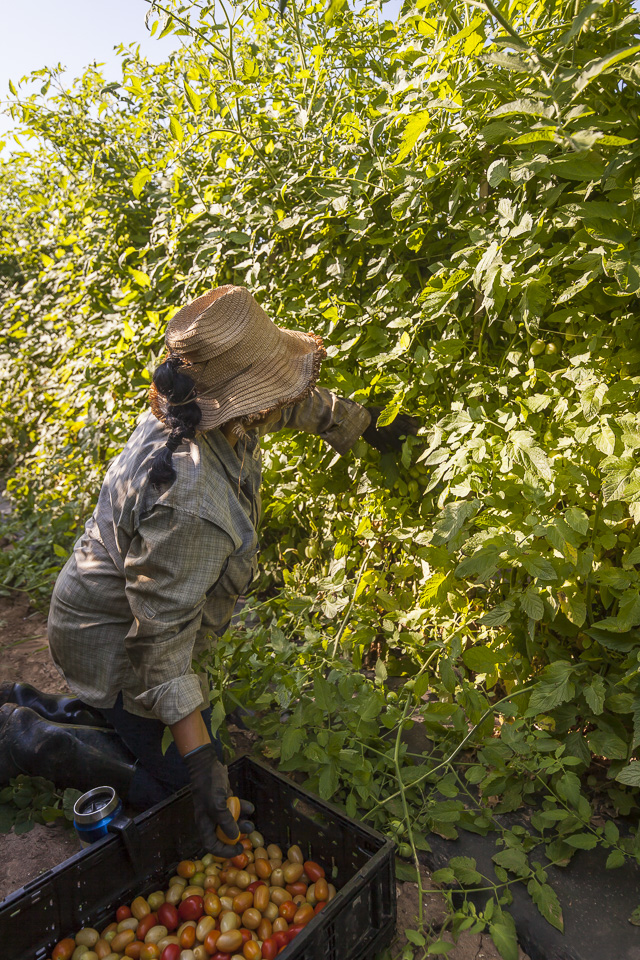 Tomato harvesting. Photo by Scott David Gordon.
Tomato harvesting. Photo by Scott David Gordon.
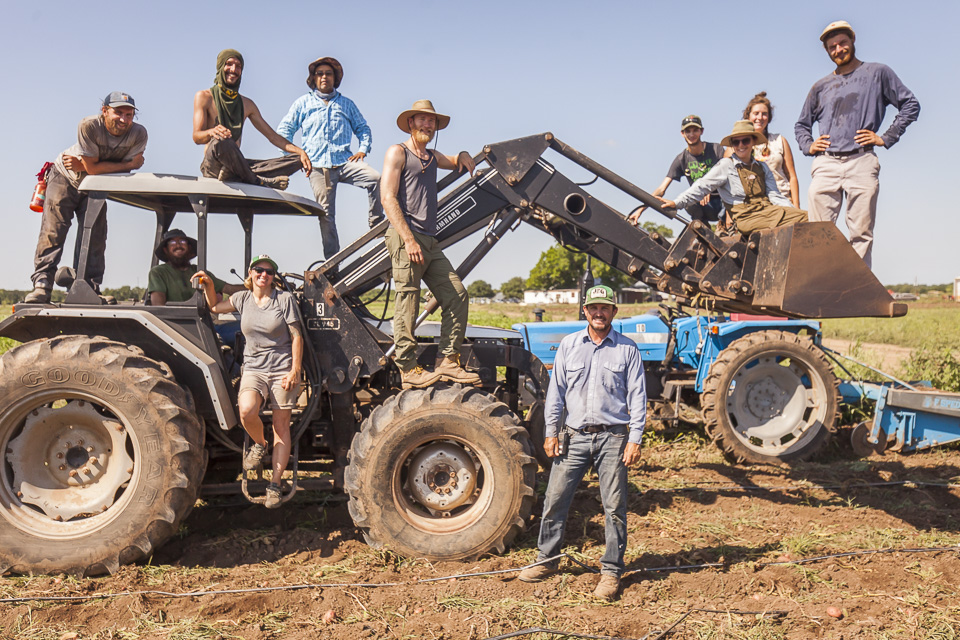 A hard-working crew. Photo by Scott David Gordon.
A hard-working crew. Photo by Scott David Gordon.
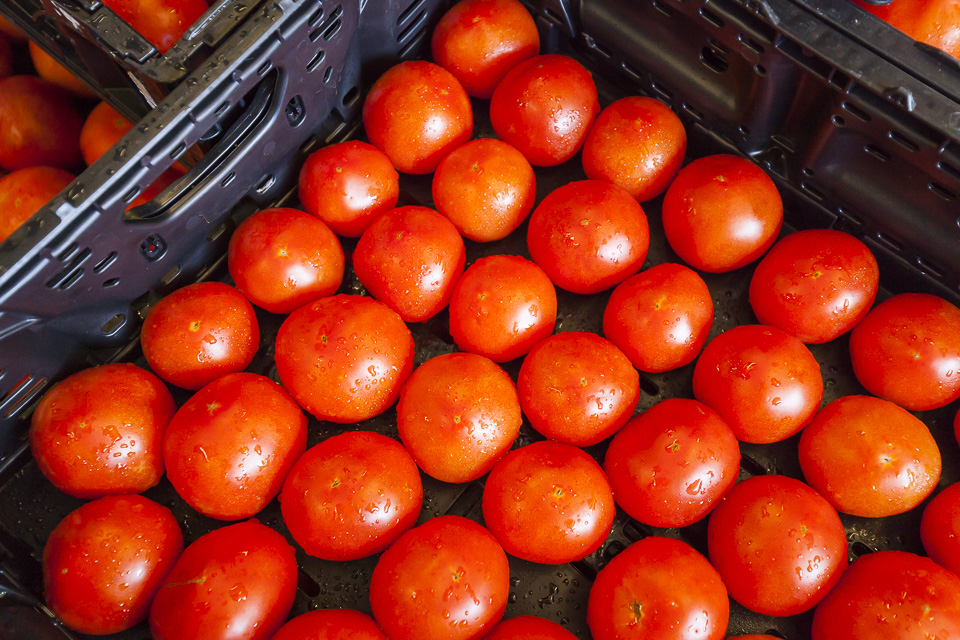 That summer red. Photo by Scott David Gordon.
That summer red. Photo by Scott David Gordon.MEDITERRANEAN STUFFED PEPPERS AND ZUCCHINI
05/31/18 — Heydon Hatcher
Recipe and Photo by Nadia Tamby
This time of year we seem to have an amazing variety of vegetables in our CSA boxes. I loved making this because I was able to use some leftover leeks and onions from the previous box (they lasted so long!) plus tomatoes, zucchini, and peppers from this week. It was such a flavorful, colorful meal. Just make a side salad and you’re all set for dinner! You can do the prep work ahead of time as well and bake it the day you serve it. Feel free to substitute the cheese here for ground lamb or beef. The exact amounts of onion/ leek/ garlic aren’t that important here, just use what you have. If you don’t have leeks, use more onion or omit the leeks entirely.
Ingredients:
Stuffing:
Sauce:
Vegetables:![]()
Instructions:
Melt butter and olive oil in a large pan and cook garlic, onion, and leeks until softened and about half the volume you started with. Add the spices and cheese and fry until fragrant. If you are using meat instead, this is where you could add the meat and fry until the meat is cooked (it doesn’t need to be fully cooked as you will bake the vegetables with the filling again)
Preheat the oven to 375F.
Mix quinoa and the rest of the filling together with the toasted almonds and golden raisins.
Taste the filling and add salt and pepper to your liking.
Blend the tomatoes, tomato paste, and olive oil, and about a half cup of water in a food processor or blender and pour into a baking dish.
If you’re like me and you get frustrated when you have filled a pepper up – only to have it tip over when you place it in your baking dish….then slice the bottom enough to have it stand up straight (but not so much that your filling can leak out!)
Fill your peppers and zucchini up with the filling and place them into the sauce in the baking dish. Place the pepper lids back on (if you wish – or use those for something else).
Cover the dish with foil and bake for about 35 minutes (at 375F). Remove the foil and bake for another 15 minutes until tops are browned. Serve hot. You may chop some parsley, cilantro, or green onion and sprinkle on top for a little extra added color and fresh flavor.
This time of year we seem to have an amazing variety of vegetables in our CSA boxes. I loved making this because I was able to use some leftover leeks and onions from the previous box (they lasted so long!) plus tomatoes, zucchini, and peppers from this week. It was such a flavorful, colorful meal. Just make a side salad and you’re all set for dinner! You can do the prep work ahead of time as well and bake it the day you serve it. Feel free to substitute the cheese here for ground lamb or beef. The exact amounts of onion/ leek/ garlic aren’t that important here, just use what you have. If you don’t have leeks, use more onion or omit the leeks entirely.
Ingredients:
Stuffing:
- 2 tablespoons butter and 2 tablespoons extra virgin olive oil
- 1 cup finely chopped onion
- 1 medium-sized leek stalk, light green and white parts thinly sliced
- 3 garlic cloves, finely chopped
- 1 jalapeno, finely chopped
- 1 teaspoon ground cumin
- 1 teaspoon ground cardamom
- 12-16 oz queso blanco, halloumi, or paneer cheese (these cheeses don’t melt), diced into ~1cm cubes
- ½ cup toasted sliced almonds
- ½ cup golden raisins
- 1 cup leftover basmati rice or quinoa
Sauce:
- 1 small can of tomato paste
- 5 small tomatoes (not cherry tomatoes!) – I used the ones from the box, which were just a little smaller than Roma tomatoes
- ¼ cup olive oil
- Enough water to make this sauce thin enough to pour into the baking dish
Vegetables:
- 5 peppers, tops cut off and insides discarded (don’t forget to remove the white membranes on the inside)
- 3 large zucchini, cut into lengths so that they are about the same height as your peppers. Use a small spoon to “core” the zucchini but make sure not to core all the way through.
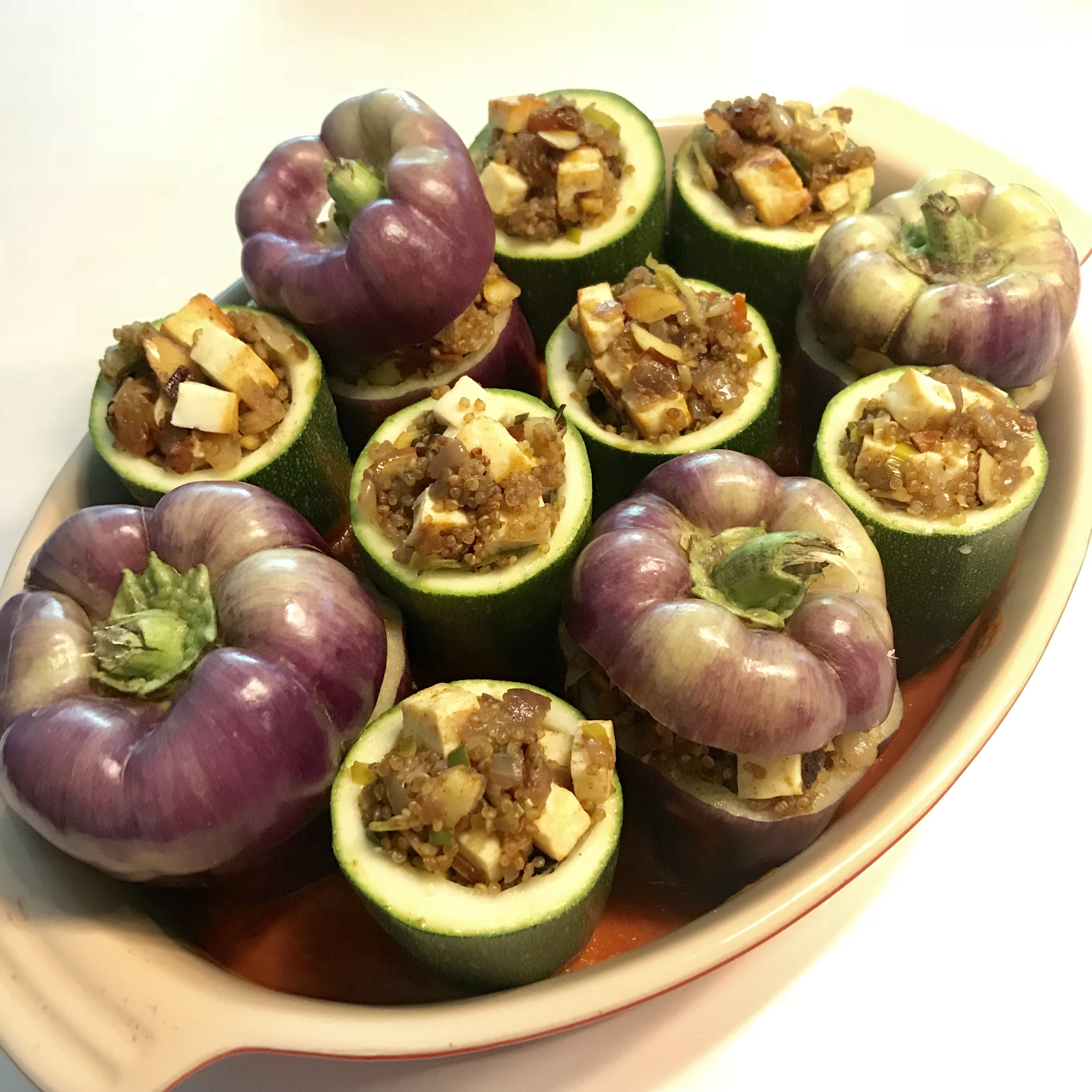
Instructions:
Melt butter and olive oil in a large pan and cook garlic, onion, and leeks until softened and about half the volume you started with. Add the spices and cheese and fry until fragrant. If you are using meat instead, this is where you could add the meat and fry until the meat is cooked (it doesn’t need to be fully cooked as you will bake the vegetables with the filling again)
Preheat the oven to 375F.
Mix quinoa and the rest of the filling together with the toasted almonds and golden raisins.
Taste the filling and add salt and pepper to your liking.
Blend the tomatoes, tomato paste, and olive oil, and about a half cup of water in a food processor or blender and pour into a baking dish.
If you’re like me and you get frustrated when you have filled a pepper up – only to have it tip over when you place it in your baking dish….then slice the bottom enough to have it stand up straight (but not so much that your filling can leak out!)
Fill your peppers and zucchini up with the filling and place them into the sauce in the baking dish. Place the pepper lids back on (if you wish – or use those for something else).
Cover the dish with foil and bake for about 35 minutes (at 375F). Remove the foil and bake for another 15 minutes until tops are browned. Serve hot. You may chop some parsley, cilantro, or green onion and sprinkle on top for a little extra added color and fresh flavor.
CSA BOX CONTENTS WEEK OF MAY 28TH
05/29/18 — Scott
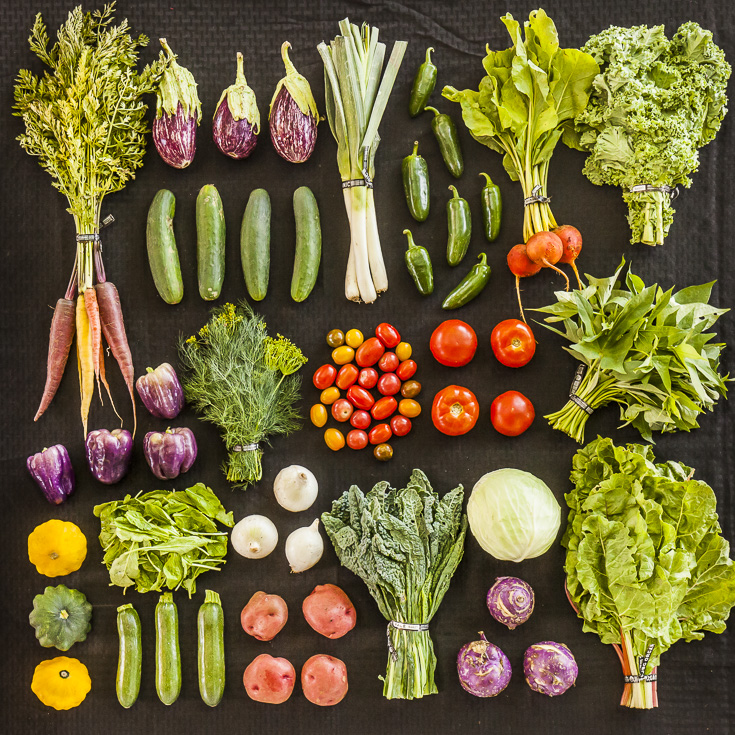 CSA Box Contents Week of May 28th
CSA Box Contents Week of May 28th
Large Box
Beet, Red
Cabbage, Red
Carrot, Orange
Cucumber
Greens, Kale, Dino
Greens, Sweet Potato
Herb, Spearmint
Okra
Onion, Ball
Pepper, Serrano
Pepper, Sweet Medley
Squash, Patty Pan
Tomato, Green
Beet, Red
Cabbage, Red
Carrot, Orange
Cucumber
Greens, Kale, Dino
Greens, Sweet Potato
Herb, Spearmint
Okra
Onion, Ball
Pepper, Serrano
Pepper, Sweet Medley
Squash, Patty Pan
Tomato, Green
Medium Box
Beet, Red
Cabbage, Red
Carrot, Rainbow
Cucumber
Greens, Collards
Herb, Spearmint
Onion, Ball
Pepper, Sweet Medley
Squash, Patty Pan
Tomato, Green
Beet, Red
Cabbage, Red
Carrot, Rainbow
Cucumber
Greens, Collards
Herb, Spearmint
Onion, Ball
Pepper, Sweet Medley
Squash, Patty Pan
Tomato, Green
Small Box
Beet, Golden
Cabbage, Green
Cauliflower, Orange
Greens, Collards
Pepper, Sweet Medley
Squash, Yellow
Tomato, Red Slicer
Beet, Golden
Cabbage, Green
Cauliflower, Orange
Greens, Collards
Pepper, Sweet Medley
Squash, Yellow
Tomato, Red Slicer
Individual Box
Beet, Golden
Cucumber
Eggplant, Black
Greens, Kale, Dino
Squash, Yellow
Beet, Golden
Cucumber
Eggplant, Black
Greens, Kale, Dino
Squash, Yellow
TOMATO TIDBITS + INFO ON U-PICK AND OUR TOMATO BULK SALE!
05/25/18 — Heydon Hatcher
You know summer is here when... tomatoes start coming in! The tomato certainly has a unique and colorful history, spanning continents and centuries! We just harvested our first ripe, juicy tomatoes this week, and couldn't be more excited that tomato season is finally here. So here's to you, Solanum lycopersicum, for brightening up our week here at JBG. More on the tasty tomato below, but first a couple of announcements.
![]() Photo by Rick Cortez.
Photo by Rick Cortez.
Don’t miss out on the opportunity to bulk-purchase our locally grown, certified organic tomatoes for a great deal, straight from our Garfield farm. Tomato season in Texas is short and sweet, and believe it or not, soon enough the heat is going to really kick in and it will be too hot for our Texas tomatoes to set fruit. Get your pre-orders in for these mouth-watering beauties and get to canning, salsa-making, pasta-saucing and more here! Please note: CSA members, log-in to your account prior to ordering bulk tomatoes so that your pick up location/home delivery specifications will show up on the order page.
Next up, our annual Tomato U-Pick! This event is a summer favorite, and we're so excited to host this one-of-a-kind event again. You and your family are invited to our Garfield, Texas tomato fields on Saturday, June 16th to harvest your share of our tomato crop. Rows and rows of juicy red fruit, ripe for the picking. Think large, firm slicers and snackable, sweet cherries... Plum tomatoes and San Marzanos, perfect for preserving.
A note on the kiddos: We might be biased, but we really think this is one of the best events out there for your kids, and we really hope you consider bringing the whole family. The joy that comes from harvesting your own food, especially something as fun as picking a tomato, is hard to quantify. There's nothing quite like running down a row, choosing the perfect tomato, getting your hands a little dirty, and then heading home with the fruits of your labor. It's a memory and a snack, all in one. Check out more info here!
![]() Last year's U-Pick. Photo by Scott David Gordon.
Last year's U-Pick. Photo by Scott David Gordon.
Alright, back to this week’s post!
Wild cultivars of the tomato originated in South America - what is today Peru, Bolivia, Chile and the other Andean nations. Native tomato plants produced small, cherry-sized fruit that likely ripened to yellow (not red!). Though it was used as a food product, the tomato was not an important crop and was one of the last Solanum family plants (other include chili peppers, potatoes, and tobacco) to be brought north to Central America during cultural migrations. To this day, a number of wild tomato cultivars can still be found growing across South America!
The Aztec culture is credited with domesticating the tomato and incorporating it into their cuisine - way back in 500 BC. The tomato lived a fruitful, but quiet life until the sack of the Aztec capital Tenochtitlan by Hernan Cortez in 1521. Tomato seeds, among many other treasures, made it back to Europe following the seizing of the city. This jet-set really opened the doors for the future of tomatoes as a global food crop.
![]() Tomatoes freshly picked. Photo by Scott David Gordon.
Tomatoes freshly picked. Photo by Scott David Gordon.
Across the Atlantic, the tomato underwent extensive breeding, most notably by the Italians, who created new varieties with all kinds of wonderful colors, shapes, and sizes - these fruits probably looked like what we call "heirlooms" today. Interestingly enough, these fruits were first bred as ornamentals, not as a food source! The first appearance of tomatoes in a European cookbook was published in Naples, Italy in 1692.
And who better to bring the glorious tomato back to America than Thomas Jefferson? The Jeffersons grew and bred tomatoes at Monticello, and along with a few other American botanists - most notably a man named Alexander Livingston. The number of tomatoes varieties around the world grew into the thousands! Jeffrey Campbell is another big player in the tomato game, making it a staple in the American household with his condensed tomato soup idea. He wanted to save money on shipping by removing some of the water weight, resulting in the iconic Campbell's Tomato Soup can.
![]() Photo by Scott David Gordon.
Photo by Scott David Gordon.
There are loads of myths, legends, and stories centered around the tomato. The Pueblo nation believed that those who ingested the seeds of a tomato would be given powers of divination, while many people in colonial times believed tomatoes to be poisonous fruits. It was said that eating the fruit of a tomato plant would turn one's blood to acid. Sounds nasty! This misconception may have come from the fact that many toxic members of the nightshade family - mandrake, belladona, and poison nightshade - all look like their cousin, the tomato.
You can't keep a good veggie down though, and by the late 16th century, tomatoes were recognized as not just nonpoisonous, but delicious! The tomato earned a reputation as an aphrodisiac, with nicknames such as pomme d'amour - French for "love apple." In the 1920s, beautiful women were sometimes referred to by the slang phrase "hot tomato."
![]() A tomato salad by Mackenzie Smith, begging to be eaten. Photo by Rick Cortez.
A tomato salad by Mackenzie Smith, begging to be eaten. Photo by Rick Cortez.
Why do we call tomatoes a vegetable, when they are really a fruit? You might blame the Supreme Court - in 1887, Nix v. Hedden determined that tomatoes should be subject to the 10% vegetable tariff that importer John Nix was protesting by importing this exotic "fruit".
In Arkansas, the tomato is both the state fruit AND the state vegetable!
Those hairs on the stems of your tomatoes? Each one has the potential to turn into a root if the stem is placed on the ground. This is why gardeners are encouraged to plant their tomatoes deep.
The town of Buñol, Spain, hosts an annual festival culminating in a giant tomato fight, called La Tomatina.
![]() Tray o' tomatoes. Photo by Rick Cortez.
Tray o' tomatoes. Photo by Rick Cortez.
Enjoy those tomatoes! 'Til next time.
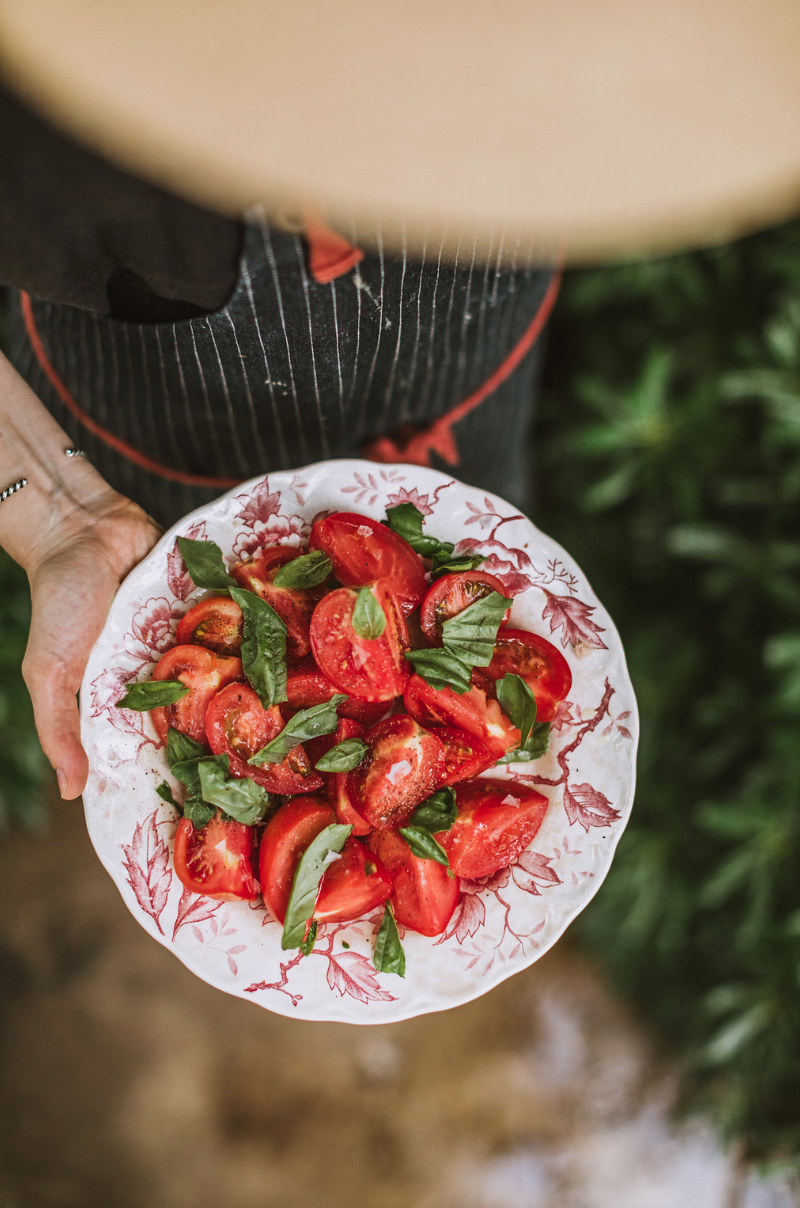 Photo by Rick Cortez.
Photo by Rick Cortez.
Don’t miss out on the opportunity to bulk-purchase our locally grown, certified organic tomatoes for a great deal, straight from our Garfield farm. Tomato season in Texas is short and sweet, and believe it or not, soon enough the heat is going to really kick in and it will be too hot for our Texas tomatoes to set fruit. Get your pre-orders in for these mouth-watering beauties and get to canning, salsa-making, pasta-saucing and more here! Please note: CSA members, log-in to your account prior to ordering bulk tomatoes so that your pick up location/home delivery specifications will show up on the order page.
Next up, our annual Tomato U-Pick! This event is a summer favorite, and we're so excited to host this one-of-a-kind event again. You and your family are invited to our Garfield, Texas tomato fields on Saturday, June 16th to harvest your share of our tomato crop. Rows and rows of juicy red fruit, ripe for the picking. Think large, firm slicers and snackable, sweet cherries... Plum tomatoes and San Marzanos, perfect for preserving.
A note on the kiddos: We might be biased, but we really think this is one of the best events out there for your kids, and we really hope you consider bringing the whole family. The joy that comes from harvesting your own food, especially something as fun as picking a tomato, is hard to quantify. There's nothing quite like running down a row, choosing the perfect tomato, getting your hands a little dirty, and then heading home with the fruits of your labor. It's a memory and a snack, all in one. Check out more info here!
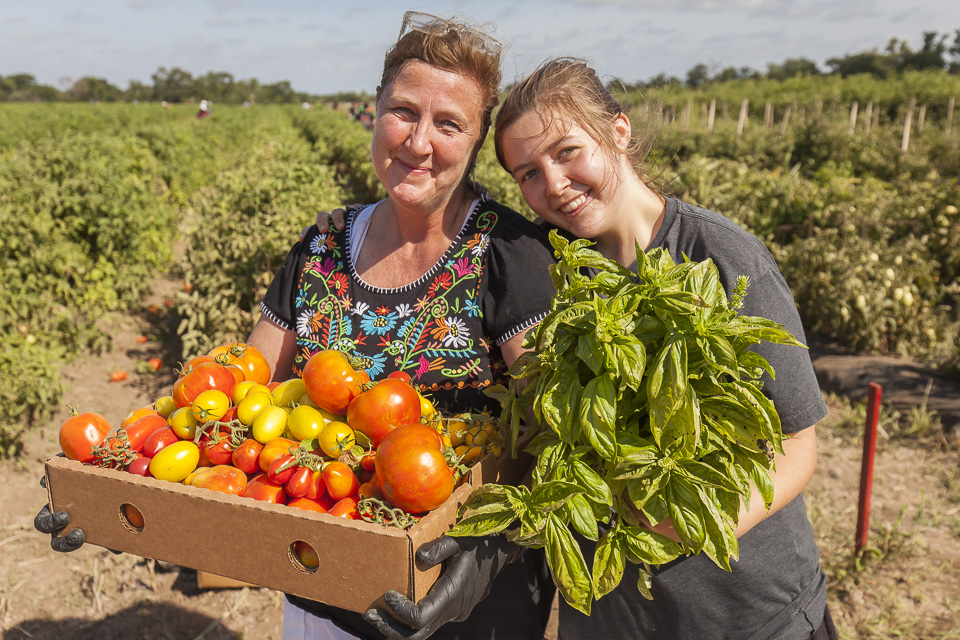 Last year's U-Pick. Photo by Scott David Gordon.
Last year's U-Pick. Photo by Scott David Gordon.
Alright, back to this week’s post!
History of the Tomato
Wild cultivars of the tomato originated in South America - what is today Peru, Bolivia, Chile and the other Andean nations. Native tomato plants produced small, cherry-sized fruit that likely ripened to yellow (not red!). Though it was used as a food product, the tomato was not an important crop and was one of the last Solanum family plants (other include chili peppers, potatoes, and tobacco) to be brought north to Central America during cultural migrations. To this day, a number of wild tomato cultivars can still be found growing across South America!
The Aztec culture is credited with domesticating the tomato and incorporating it into their cuisine - way back in 500 BC. The tomato lived a fruitful, but quiet life until the sack of the Aztec capital Tenochtitlan by Hernan Cortez in 1521. Tomato seeds, among many other treasures, made it back to Europe following the seizing of the city. This jet-set really opened the doors for the future of tomatoes as a global food crop.
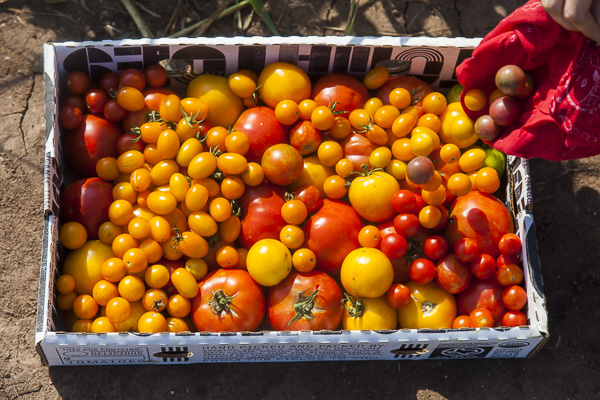 Tomatoes freshly picked. Photo by Scott David Gordon.
Tomatoes freshly picked. Photo by Scott David Gordon.
Across the Atlantic, the tomato underwent extensive breeding, most notably by the Italians, who created new varieties with all kinds of wonderful colors, shapes, and sizes - these fruits probably looked like what we call "heirlooms" today. Interestingly enough, these fruits were first bred as ornamentals, not as a food source! The first appearance of tomatoes in a European cookbook was published in Naples, Italy in 1692.
And who better to bring the glorious tomato back to America than Thomas Jefferson? The Jeffersons grew and bred tomatoes at Monticello, and along with a few other American botanists - most notably a man named Alexander Livingston. The number of tomatoes varieties around the world grew into the thousands! Jeffrey Campbell is another big player in the tomato game, making it a staple in the American household with his condensed tomato soup idea. He wanted to save money on shipping by removing some of the water weight, resulting in the iconic Campbell's Tomato Soup can.
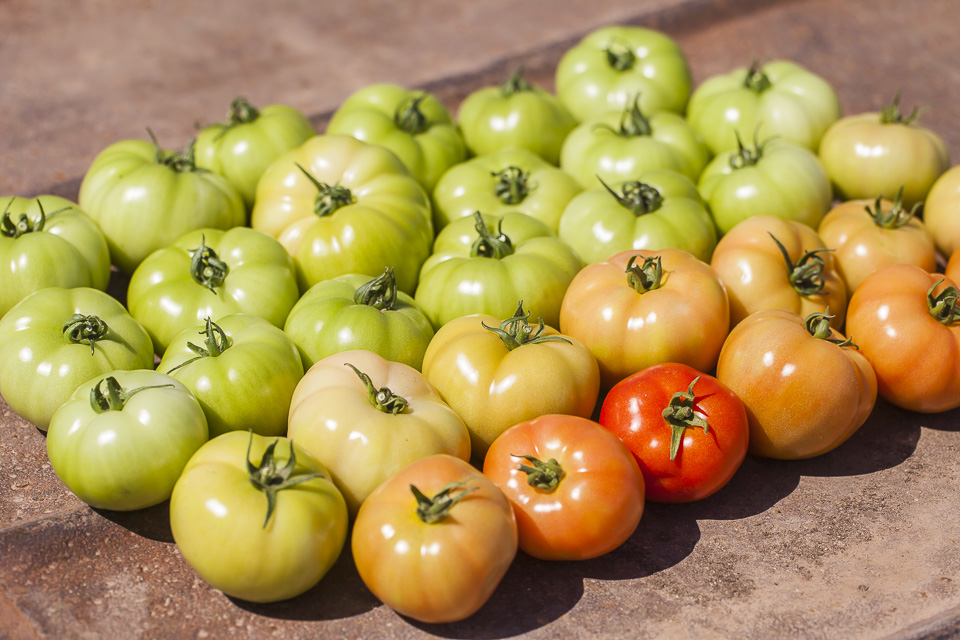 Photo by Scott David Gordon.
Photo by Scott David Gordon.
Tomato Folklore
There are loads of myths, legends, and stories centered around the tomato. The Pueblo nation believed that those who ingested the seeds of a tomato would be given powers of divination, while many people in colonial times believed tomatoes to be poisonous fruits. It was said that eating the fruit of a tomato plant would turn one's blood to acid. Sounds nasty! This misconception may have come from the fact that many toxic members of the nightshade family - mandrake, belladona, and poison nightshade - all look like their cousin, the tomato.
You can't keep a good veggie down though, and by the late 16th century, tomatoes were recognized as not just nonpoisonous, but delicious! The tomato earned a reputation as an aphrodisiac, with nicknames such as pomme d'amour - French for "love apple." In the 1920s, beautiful women were sometimes referred to by the slang phrase "hot tomato."
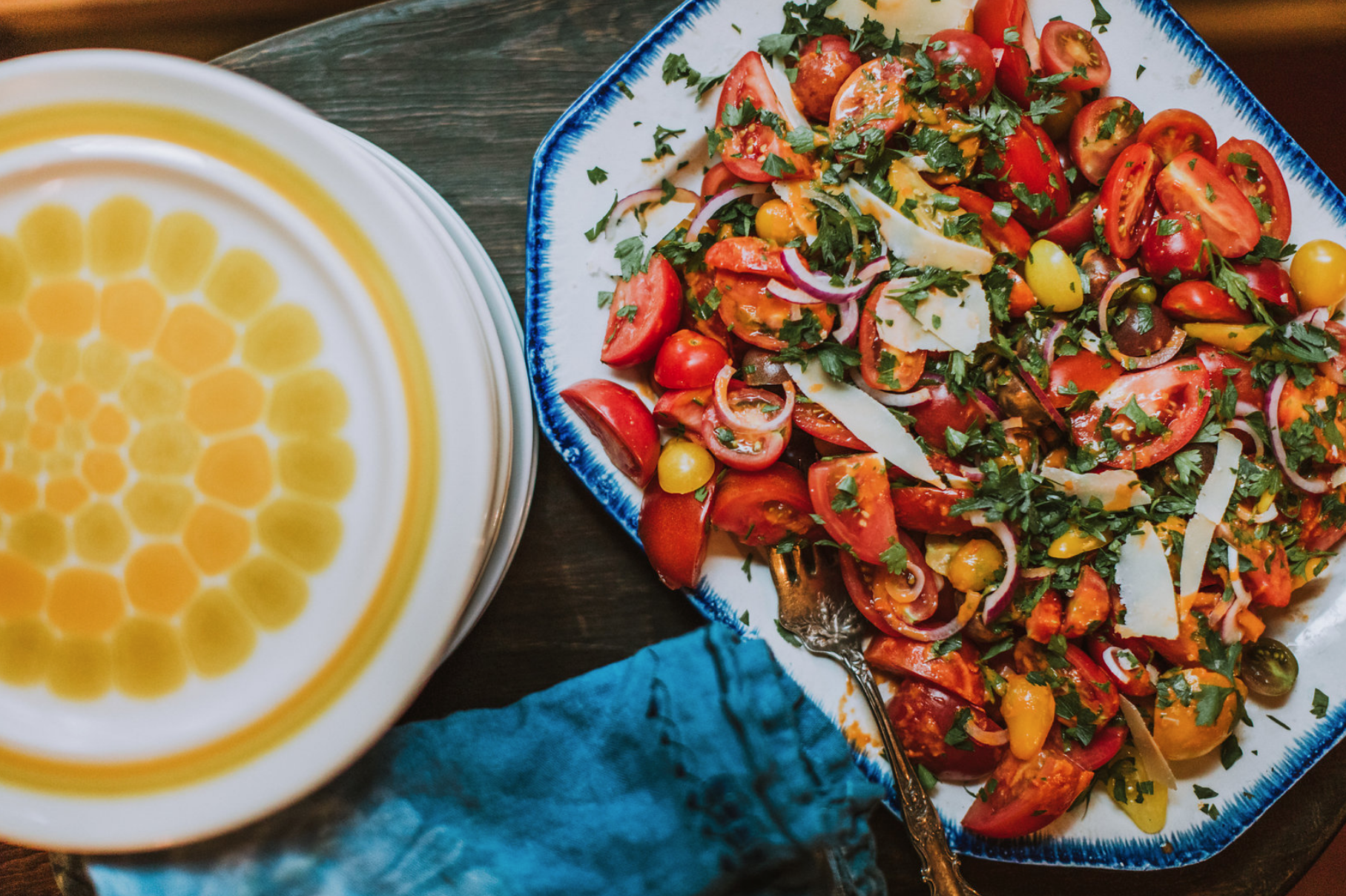 A tomato salad by Mackenzie Smith, begging to be eaten. Photo by Rick Cortez.
A tomato salad by Mackenzie Smith, begging to be eaten. Photo by Rick Cortez.
Fun Facts
Why do we call tomatoes a vegetable, when they are really a fruit? You might blame the Supreme Court - in 1887, Nix v. Hedden determined that tomatoes should be subject to the 10% vegetable tariff that importer John Nix was protesting by importing this exotic "fruit".
In Arkansas, the tomato is both the state fruit AND the state vegetable!
Those hairs on the stems of your tomatoes? Each one has the potential to turn into a root if the stem is placed on the ground. This is why gardeners are encouraged to plant their tomatoes deep.
The town of Buñol, Spain, hosts an annual festival culminating in a giant tomato fight, called La Tomatina.
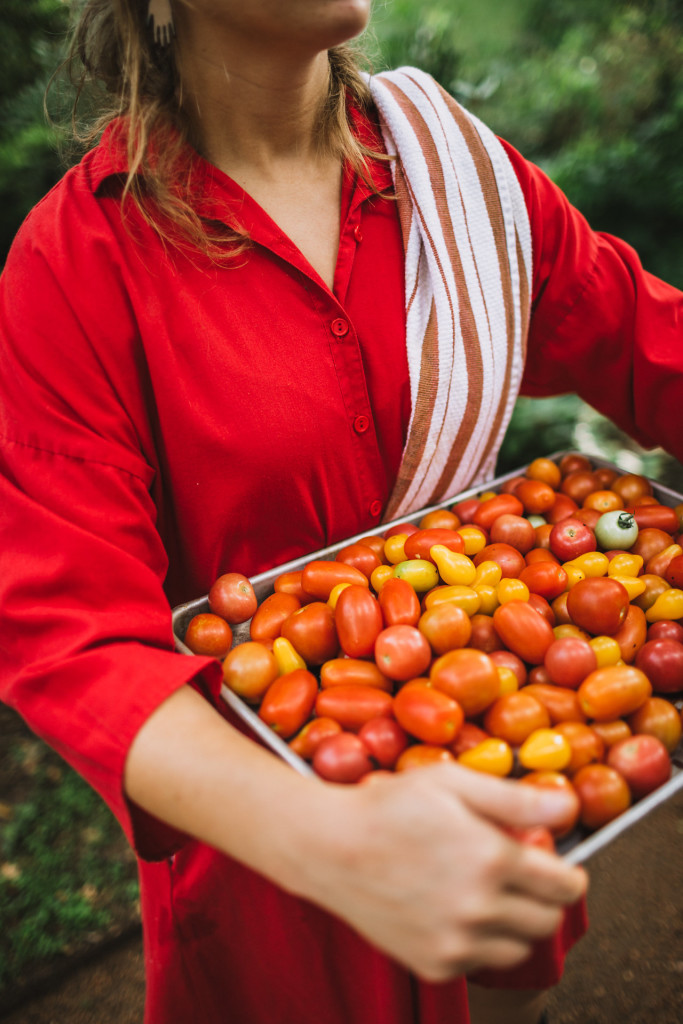 Tray o' tomatoes. Photo by Rick Cortez.
Tray o' tomatoes. Photo by Rick Cortez.
Enjoy those tomatoes! 'Til next time.
WEEK 21 IN PHOTOS
05/25/18 — Heydon Hatcher
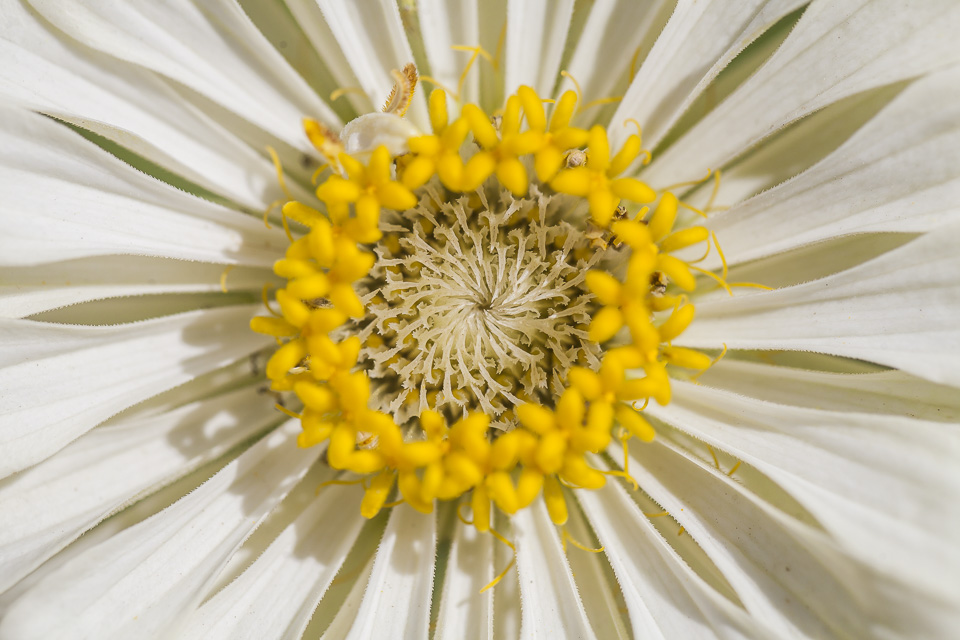 Zinnia close-up. Photo by Scott David Gordon.
Zinnia close-up. Photo by Scott David Gordon.
It's hot, hot, hot out at the farm and tomatoes are finally here! We've been slaving away in the summertime sunshine, and are relishing the influx of gorgeous summer crops. Scott, our photographer, captured all the summertime magic happening out at the farm this week.
In other news, we’re hiring! It’s that time of year when our fields are exploding with vegetables, and we need some more hands! Specifically, we’re hiring for our harvest crew, bulk crew, restaurant packing crew, and also our farmers market crew. If you’ve ever wanted to work on a farm or get more involved with local agriculture - here’s your chance! Best perks of working for a farm? Salt of the earth co-workers and oodles of organic vegetables. Details here.
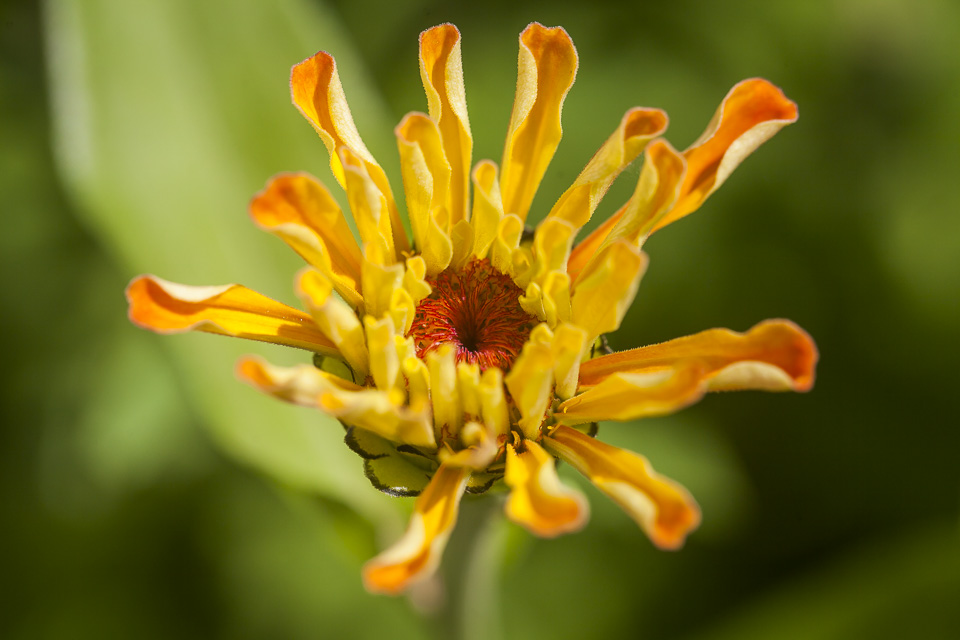 Zinnia textures. Photo by Scott David Gordon.
Zinnia textures. Photo by Scott David Gordon.
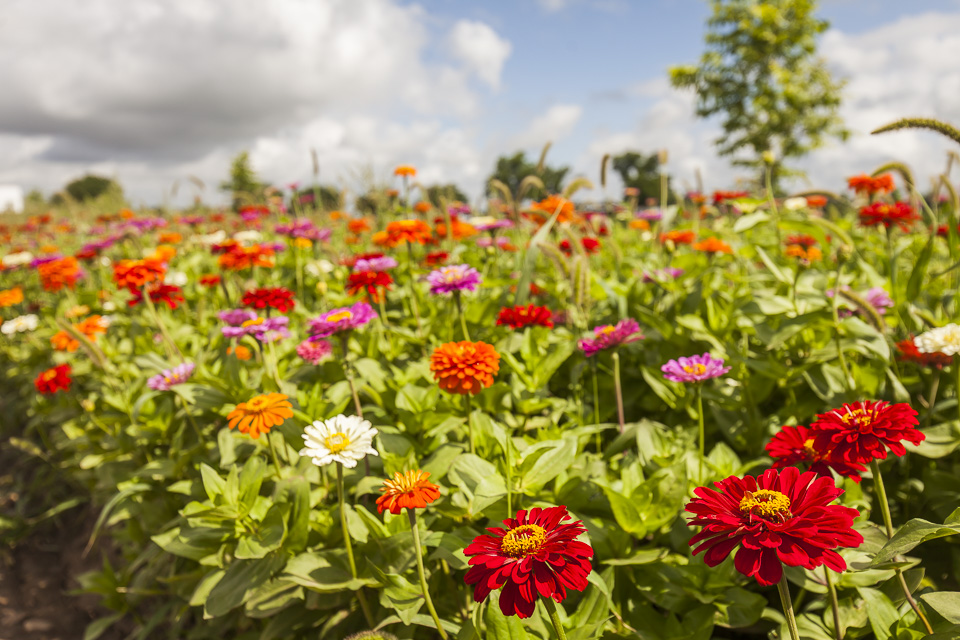 Zinnia field. Photo by Scott David Gordon.
Zinnia field. Photo by Scott David Gordon.
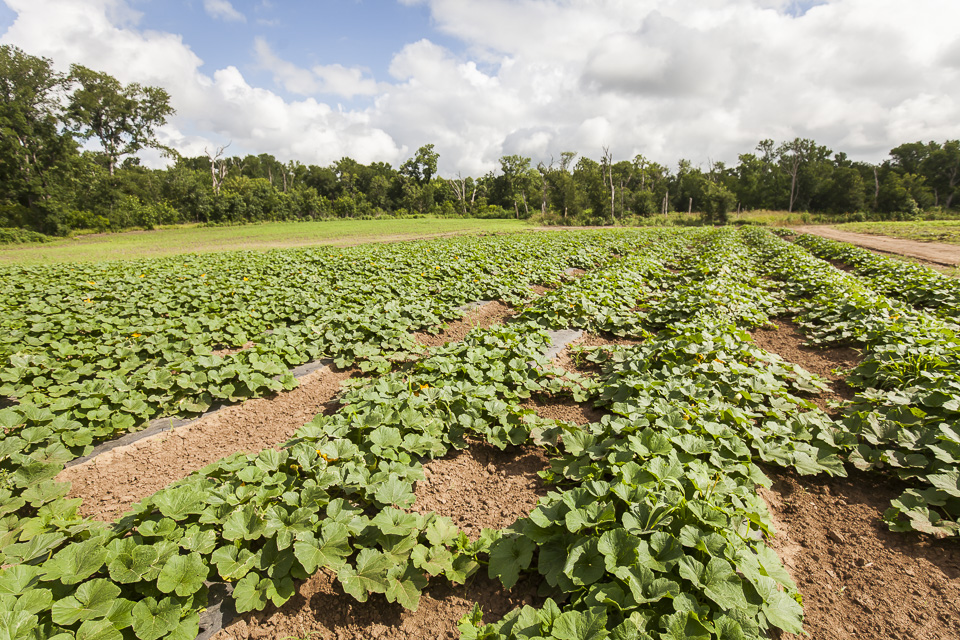 Squash vines. Photo by Scott David Gordon.
Squash vines. Photo by Scott David Gordon.
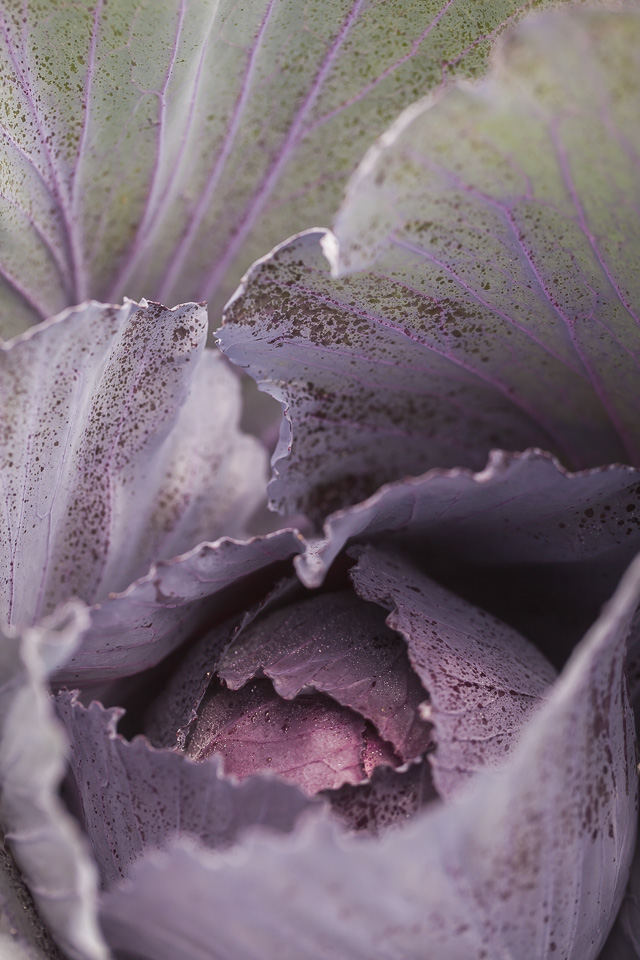 Gorgeous cabbage textures. Photo by Scott David Gordon.
Gorgeous cabbage textures. Photo by Scott David Gordon.
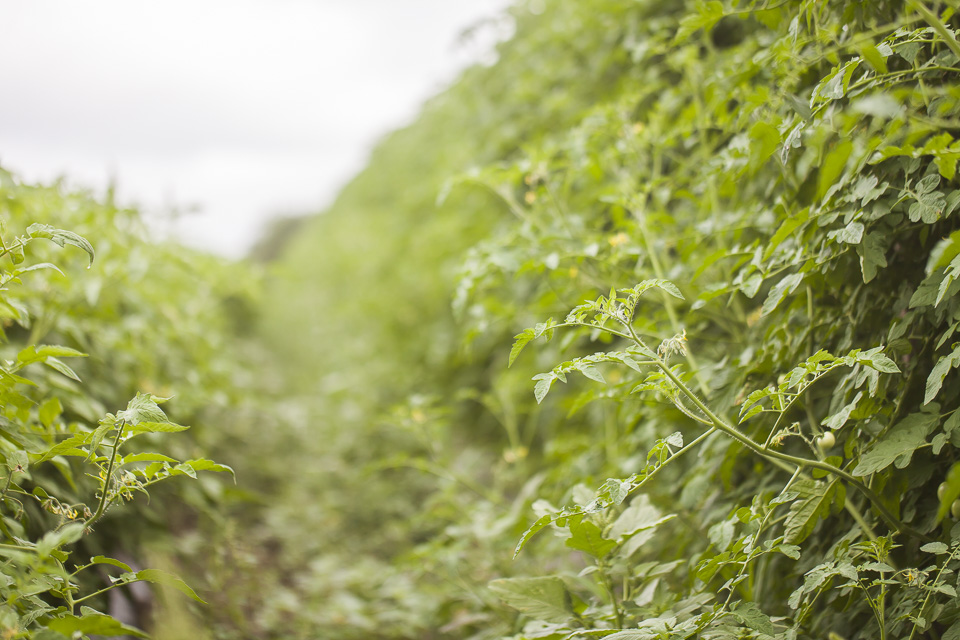 Tomato rows. Photo by Scott David Gordon.
Tomato rows. Photo by Scott David Gordon.
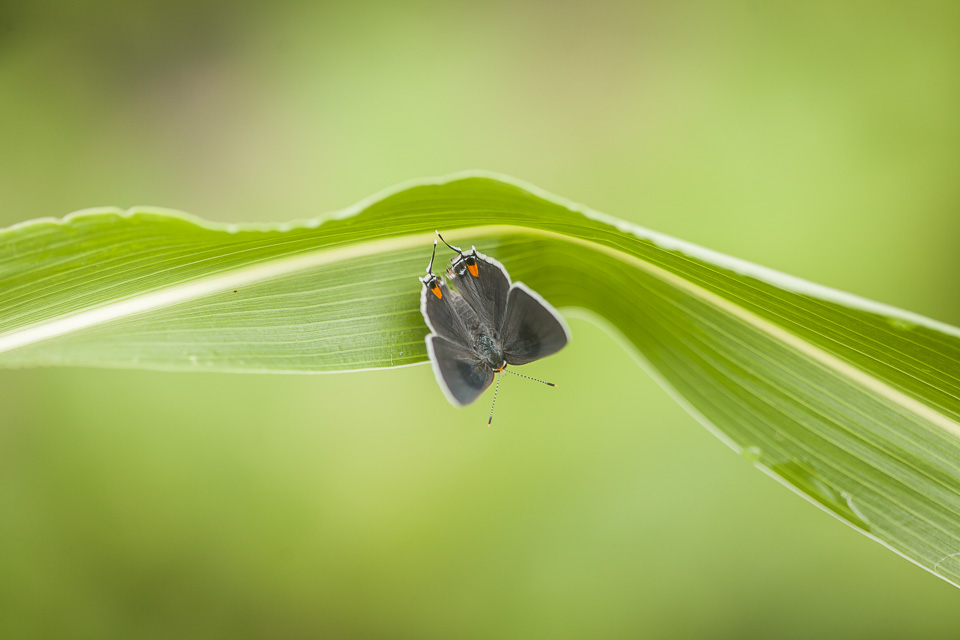 Magic moment. Photo by Scott David Gordon.
Magic moment. Photo by Scott David Gordon.
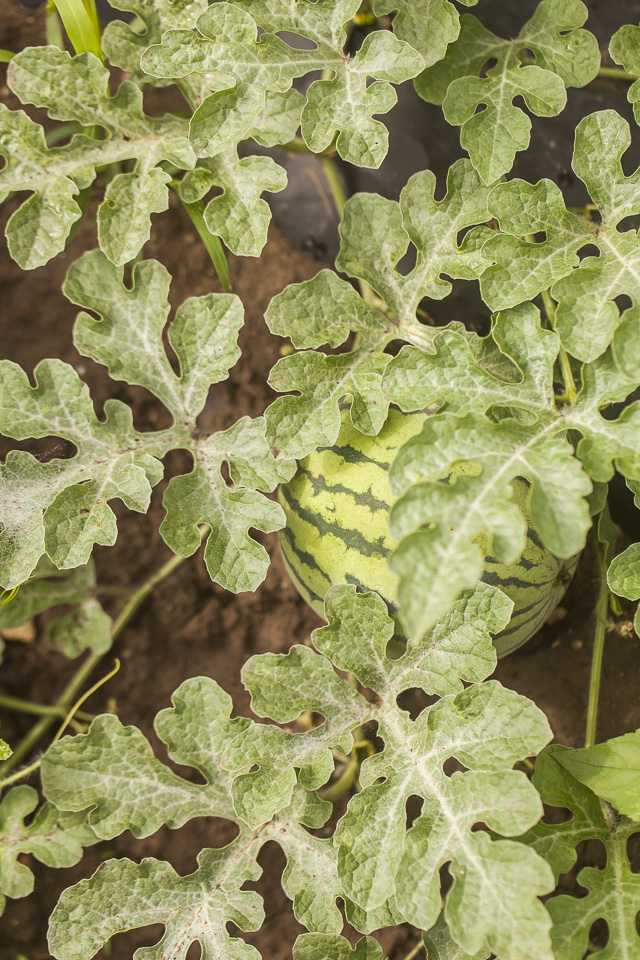 I spy something juicy. Photo by Scott David Gordon.
I spy something juicy. Photo by Scott David Gordon.
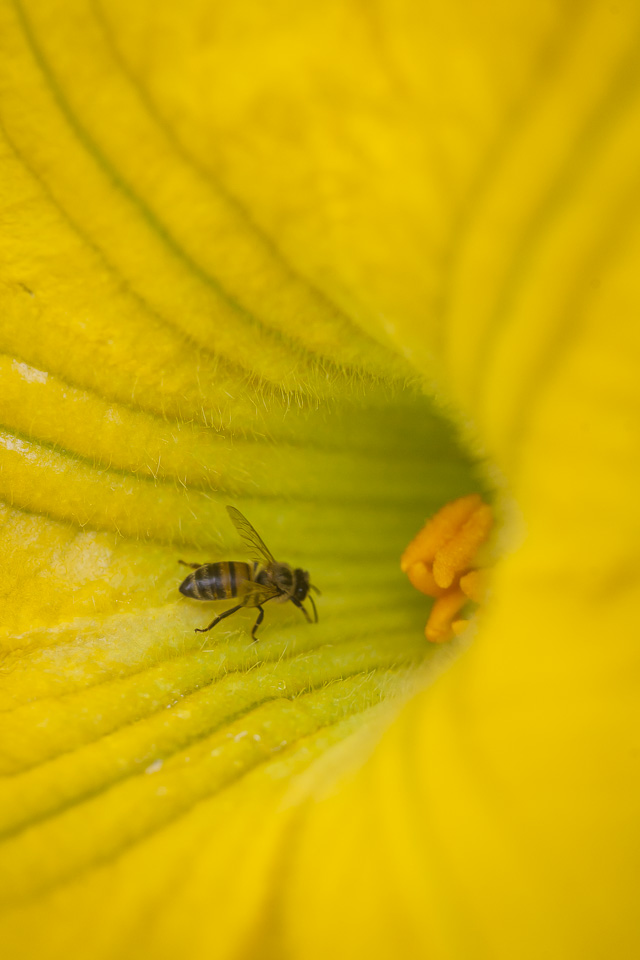 A busy bee. Photo by Scott David Gordon.
A busy bee. Photo by Scott David Gordon.
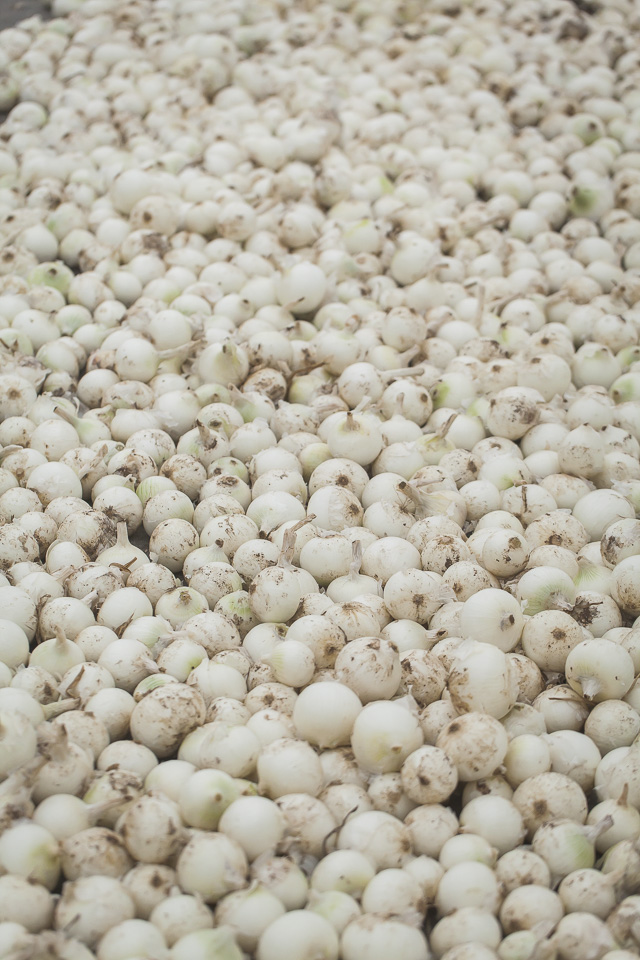 Onions curing. Photo by Scott David Gordon.
Onions curing. Photo by Scott David Gordon.
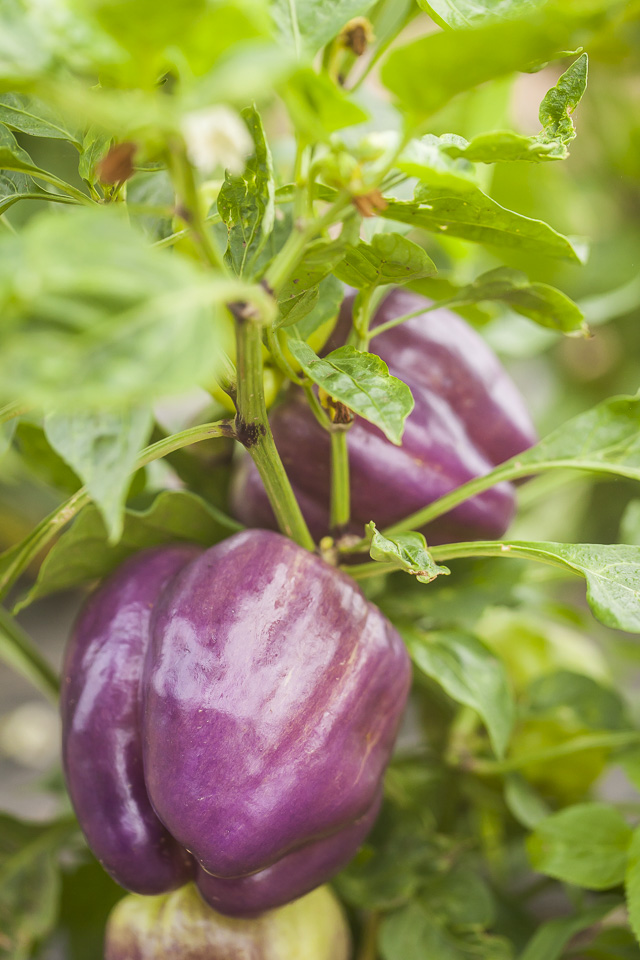 Bells sizing up. Photo by Scott David Gordon.
Bells sizing up. Photo by Scott David Gordon.
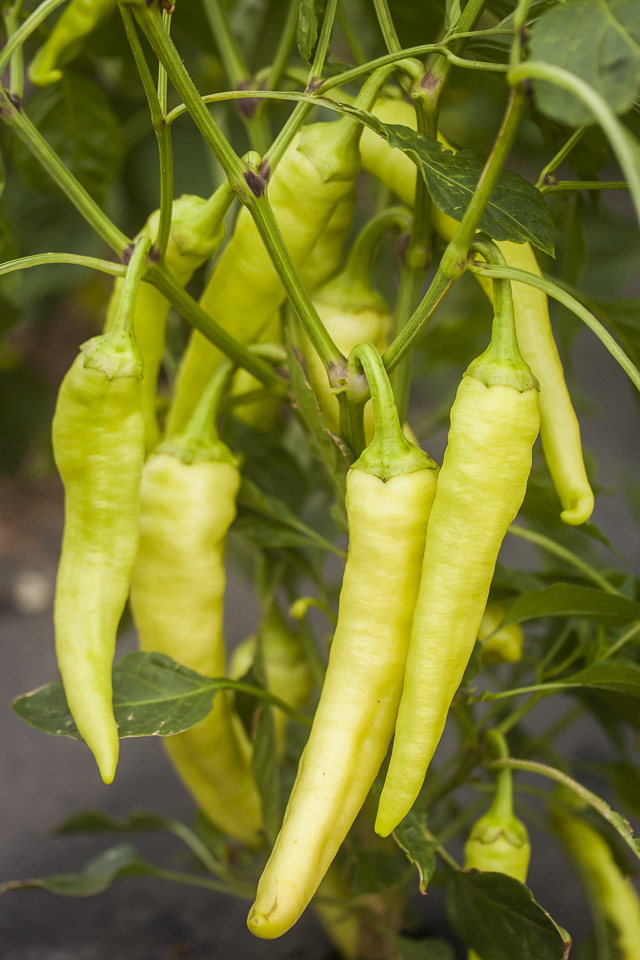 Pepper season is upon us. Photo by Scott David Gordon.
Pepper season is upon us. Photo by Scott David Gordon.
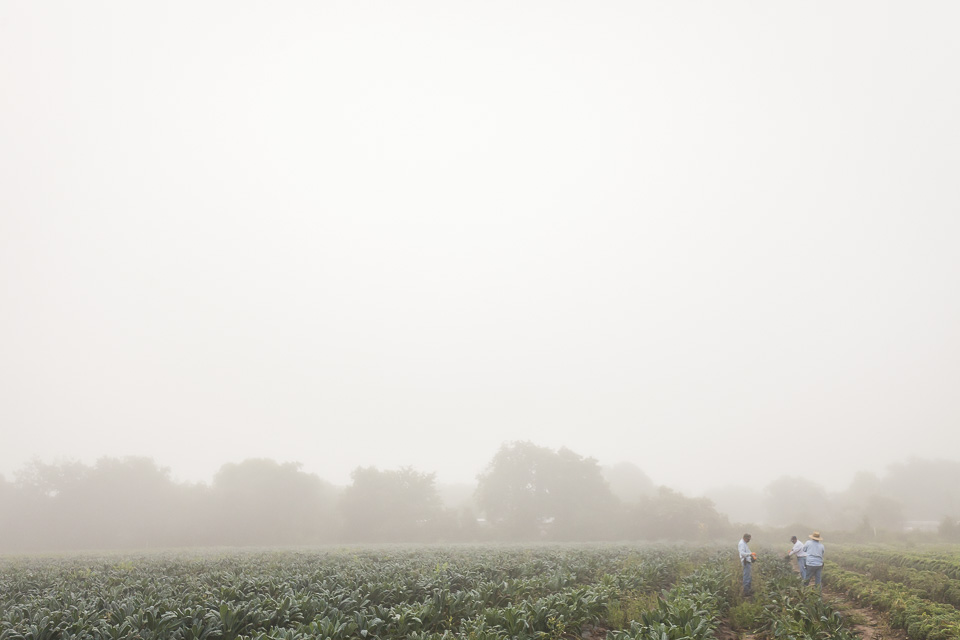 Morning fog. Photo by Scott David Gordon.
Morning fog. Photo by Scott David Gordon.
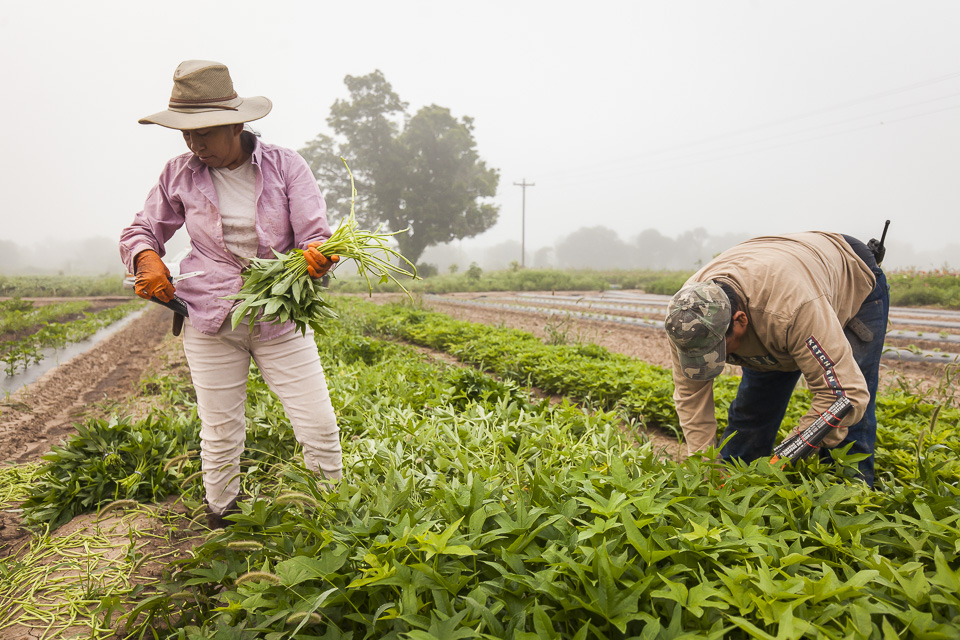 Harvesting sweet potato greens. Photo by Scott David Gordon.
Harvesting sweet potato greens. Photo by Scott David Gordon.FENNEL AND ZUCCHINI SALAD WITH CITRUS VINAIGRETTE
05/24/18 — Heydon Hatcher
Servings: 2 / Total Time: 25 minutes / Author: The Migoni Kitchen
We got plenty of fresh vegetables in our CSA box this week including mixed greens, fennel, zucchini and summer squash, and carrots. The hot weather is already here in Dallas so we have been brainstorming lighter recipes. We loved the way this salad turned out using a combination of flavors, including roasted fennel and raw zucchini ribbons.
Fennel is packed full of flavor and can taste great eaten raw, but we prefer to roast it for about 10 minutes to help make the taste more subtle. We did opt to leave the zucchini raw, which may sound strange, but the texture is perfect for the salad and pairs so well with the citrus vinaigrette.
We added some avocado, mixed greens, and cherry tomatoes to balance it out and paired the salad with a crab cake. It pairs really well with all types of seafood - like a grilled fish, seared scallops, roasted salmon, etc.
![]()
Ingredients:
![]()
Instructions:
Peel outer layer of fennel bulb off and slice bulb thinly lengthwise. Set aside 1-2 tablespoons of the fennel fronds for the dressing.
Pre-heat oven to 400F. Add sliced fennel to baking sheet with a drizzle of olive oil and bake for about 10 minutes. Set aside.
Next, make the dressing. Add garlic, salt, pepper, mint, fennel fronds, oil, vinegar, honey and citrus to blender. Blend until smooth. Set aside.
Thinly slice zucchini lengthwise to make ribbons. This is easiest with a mandolin slicer, but can also be done by hand.
Toss zucchini ribbons with half of the citrus dressing in a large bowl and let marinate for 5-10 minutes.
On your plate, arrange roasted fennel, zucchini ribbons, mixed greens, sliced avocado, and tomatoes.
Top with remaining citrus dressing and any extra herbs. Pairs well with fish and seafood.
We got plenty of fresh vegetables in our CSA box this week including mixed greens, fennel, zucchini and summer squash, and carrots. The hot weather is already here in Dallas so we have been brainstorming lighter recipes. We loved the way this salad turned out using a combination of flavors, including roasted fennel and raw zucchini ribbons.
Fennel is packed full of flavor and can taste great eaten raw, but we prefer to roast it for about 10 minutes to help make the taste more subtle. We did opt to leave the zucchini raw, which may sound strange, but the texture is perfect for the salad and pairs so well with the citrus vinaigrette.
We added some avocado, mixed greens, and cherry tomatoes to balance it out and paired the salad with a crab cake. It pairs really well with all types of seafood - like a grilled fish, seared scallops, roasted salmon, etc.

Ingredients:
- 1 Bulb of Fennel, thinly sliced; Reserve fennel fronds
- 2 Zucchini or Summer Squash, sliced thinly into ribbons
- 1 Avocado, sliced
- 1 Cup Cherry Tomatoes, Halved
- 2 Cups Mixed Greens
- 1 Teaspoon Honey
- 1 Clove Garlic
- ½ Lemon, Juiced
- ½ Orange, Juiced
- ½ Lime, Juiced
- 2 Tablespoons Mint, chopped
- ¼ Teaspoon Kosher Salt
- ¼ Teaspoon Black Pepper
- 1 Tablespoon Red Wine Vinegar
- 3 Tablespoons Extra Virgin Olive Oil

Instructions:
Peel outer layer of fennel bulb off and slice bulb thinly lengthwise. Set aside 1-2 tablespoons of the fennel fronds for the dressing.
Pre-heat oven to 400F. Add sliced fennel to baking sheet with a drizzle of olive oil and bake for about 10 minutes. Set aside.
Next, make the dressing. Add garlic, salt, pepper, mint, fennel fronds, oil, vinegar, honey and citrus to blender. Blend until smooth. Set aside.
Thinly slice zucchini lengthwise to make ribbons. This is easiest with a mandolin slicer, but can also be done by hand.
Toss zucchini ribbons with half of the citrus dressing in a large bowl and let marinate for 5-10 minutes.
On your plate, arrange roasted fennel, zucchini ribbons, mixed greens, sliced avocado, and tomatoes.
Top with remaining citrus dressing and any extra herbs. Pairs well with fish and seafood.
CSA BOX CONTENTS WEEK OF MAY 21ST
05/22/18 — Scott
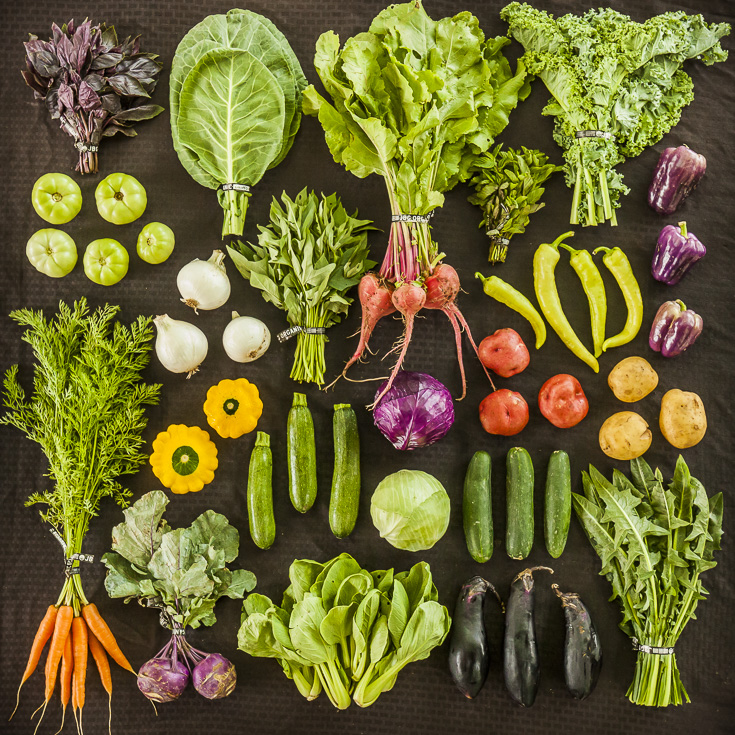 CSA Box Contents Week of May 21st
CSA Box Contents Week of May 21st
Large Box
Beet, Golden
Cabbage
Carrot, Rainbow
Cucumber
Eggplant, Black
Greens, Arugula
Greens, Collards
Herb, Dill
Herb, Fennel
Onion, Ball
Pepper, Jalapeno
Squash, Zucchini
Tomato
Beet, Golden
Cabbage
Carrot, Rainbow
Cucumber
Eggplant, Black
Greens, Arugula
Greens, Collards
Herb, Dill
Herb, Fennel
Onion, Ball
Pepper, Jalapeno
Squash, Zucchini
Tomato
Medium Box
Beet, Golden
Carrot, Orange
Eggplant, Black
Greens, Kale, Dino
Greens, Sweet Potato
Kohlrabi, Purple
Leek
Lettuce, Romaine
Onion, Ball
Pepper, Jalapeno
Potato, Red
Beet, Golden
Carrot, Orange
Eggplant, Black
Greens, Kale, Dino
Greens, Sweet Potato
Kohlrabi, Purple
Leek
Lettuce, Romaine
Onion, Ball
Pepper, Jalapeno
Potato, Red
Small Box
Carrot, Orange
Cucumber
Greens, Kale, Curly
Herb, Dill
Lettuce, Romaine
Onion, Ball
Pepper Bell, Purple
Carrot, Orange
Cucumber
Greens, Kale, Curly
Herb, Dill
Lettuce, Romaine
Onion, Ball
Pepper Bell, Purple
Individual Box
Carrot, Orange
Greens, Collards
Greens, Kale, Dino
Herb, Basil
Squash, Yellow
Tomato
Carrot, Orange
Greens, Collards
Greens, Kale, Dino
Herb, Basil
Squash, Yellow
Tomato






 0 ITEMS IN CART
0 ITEMS IN CART 

